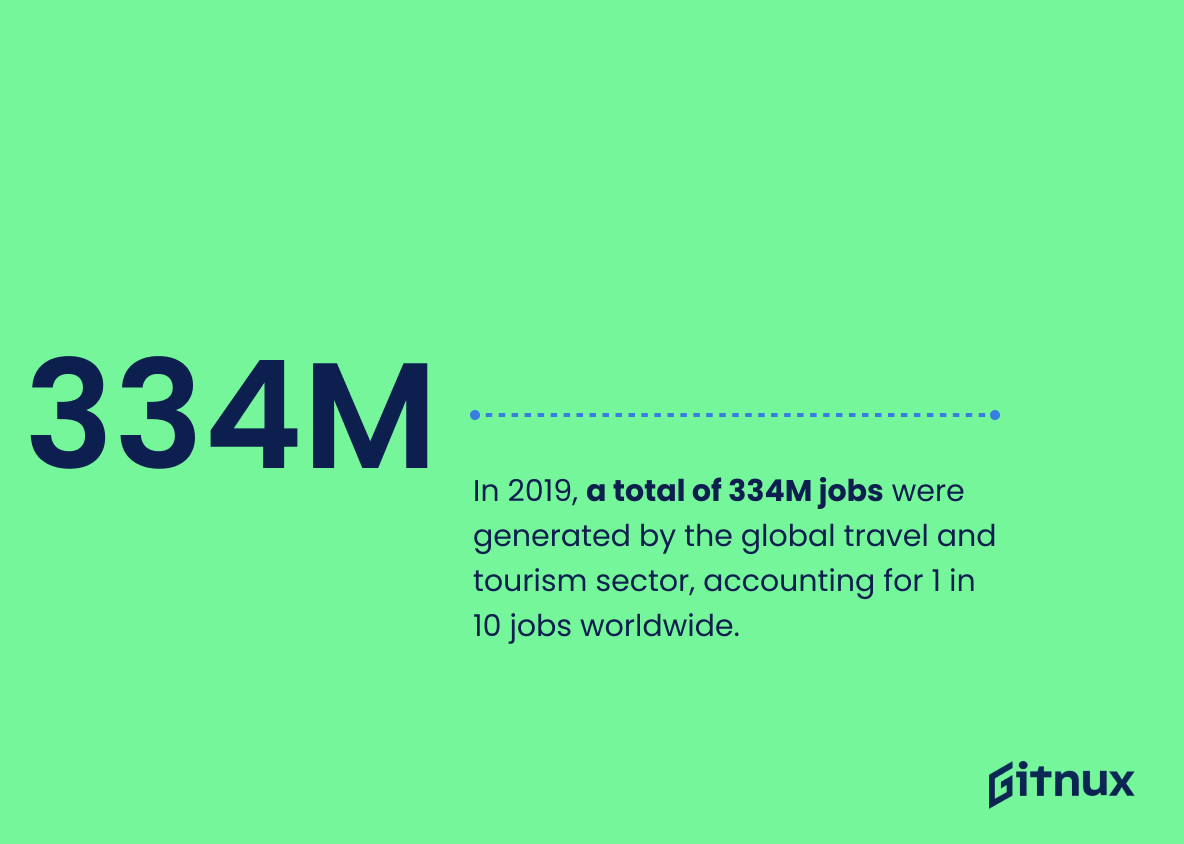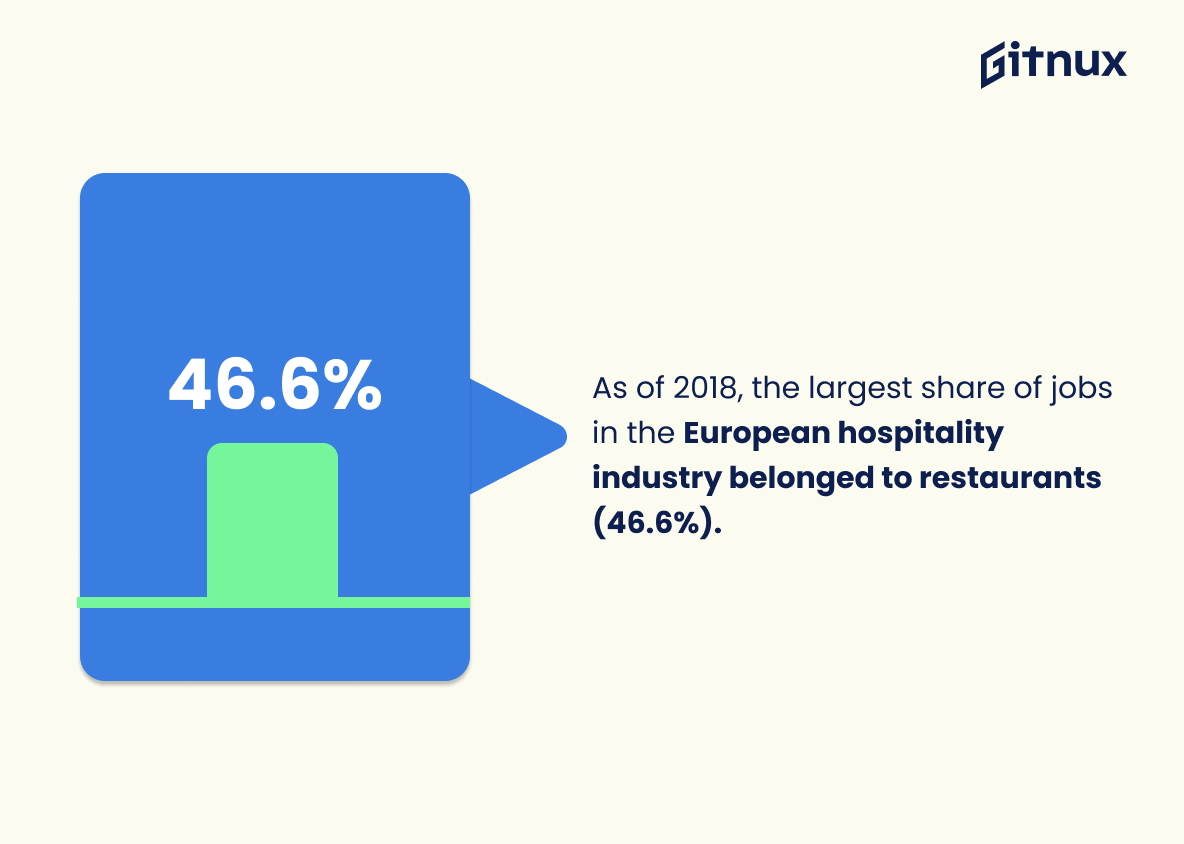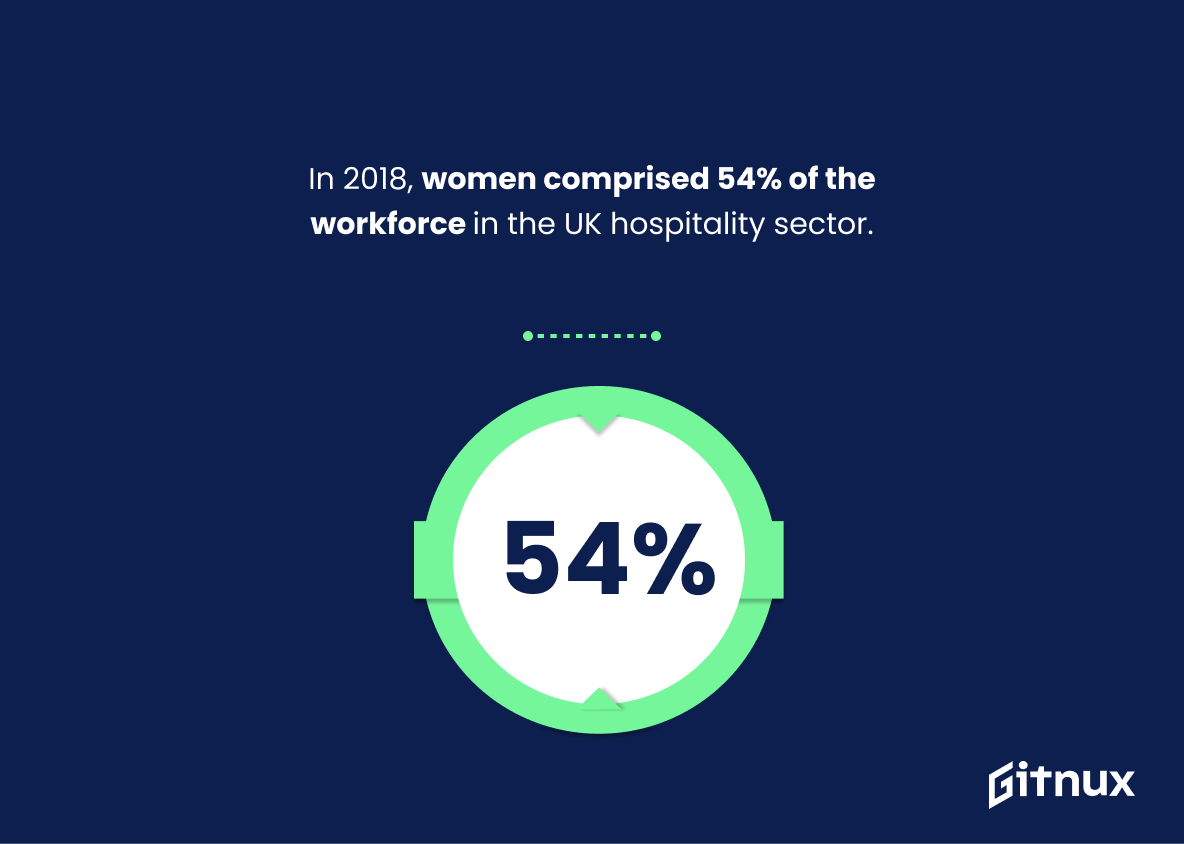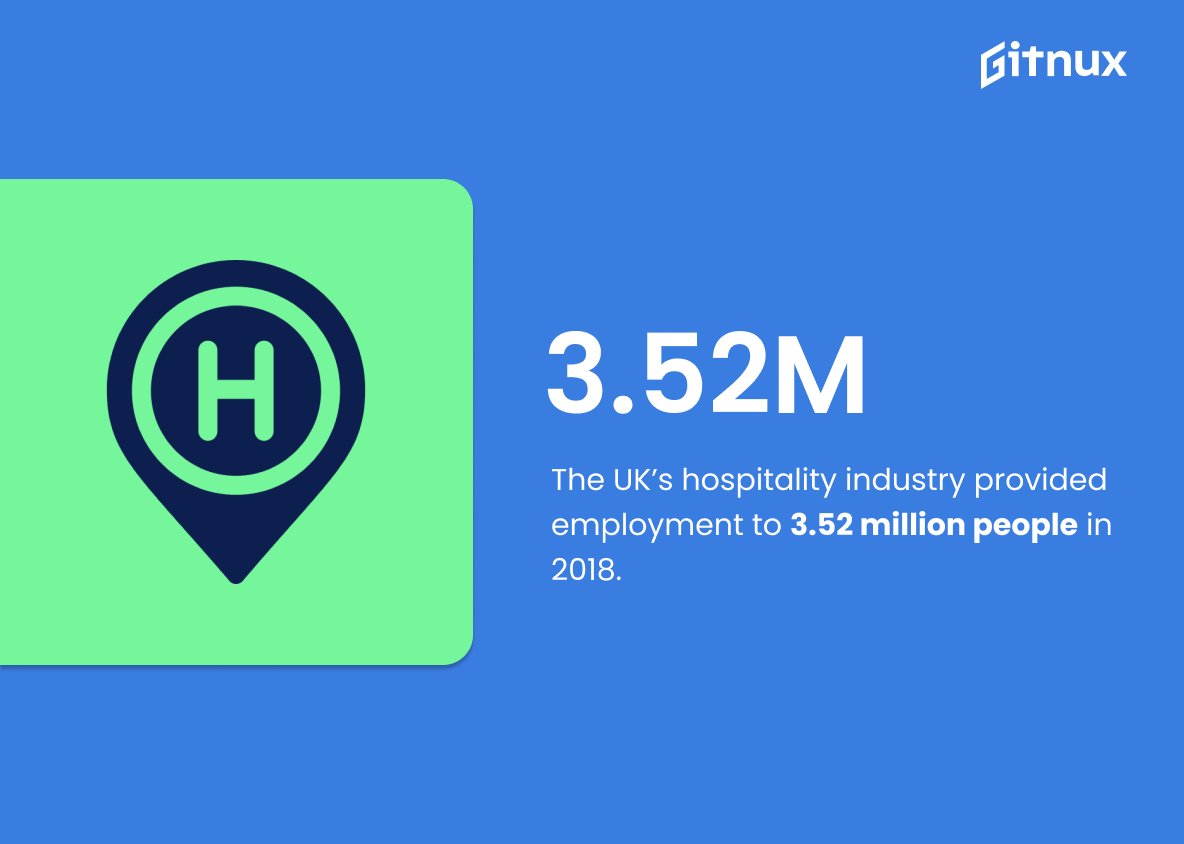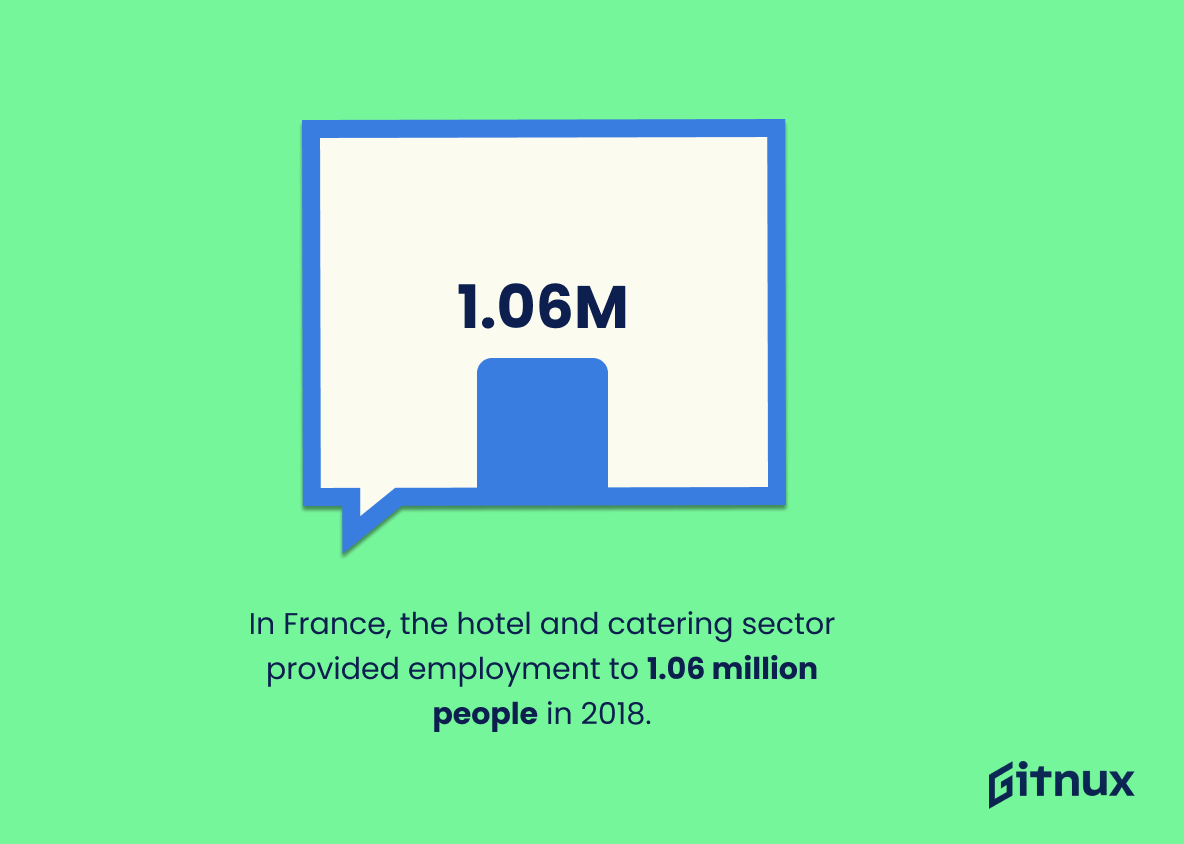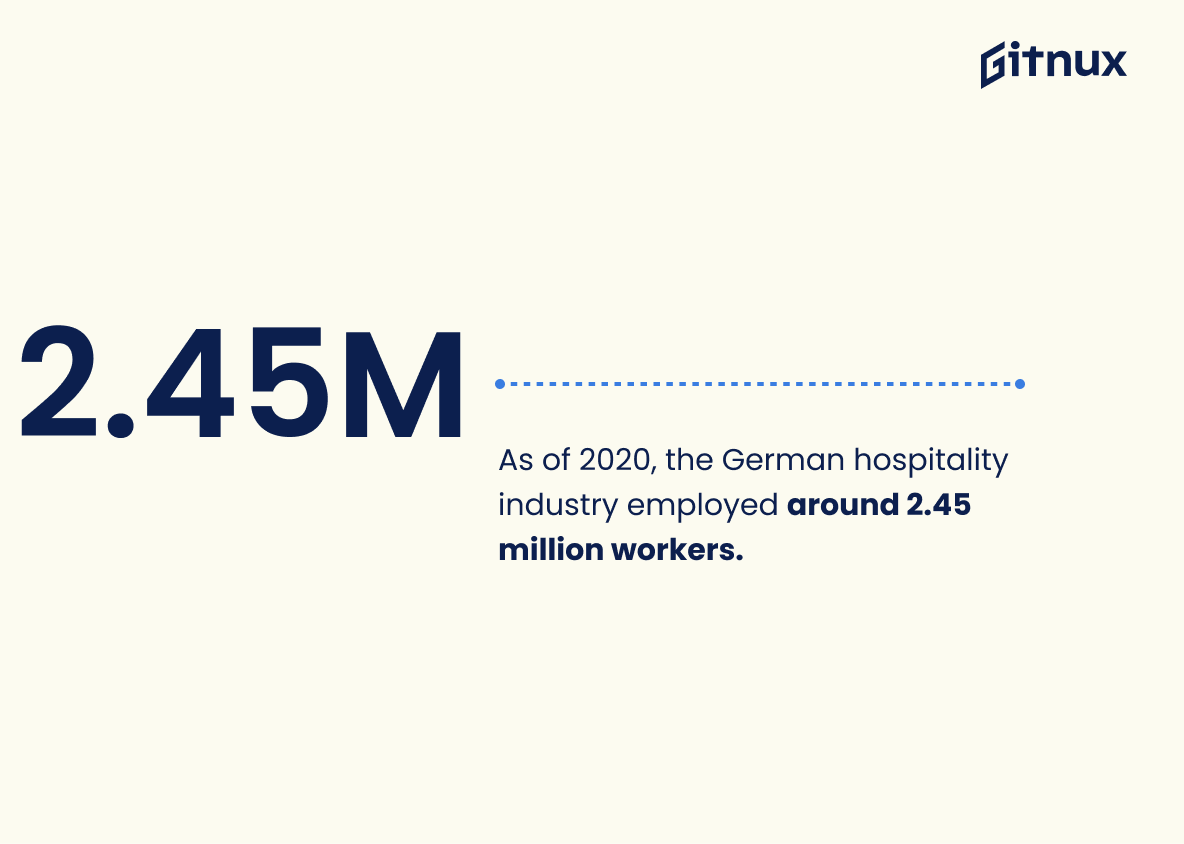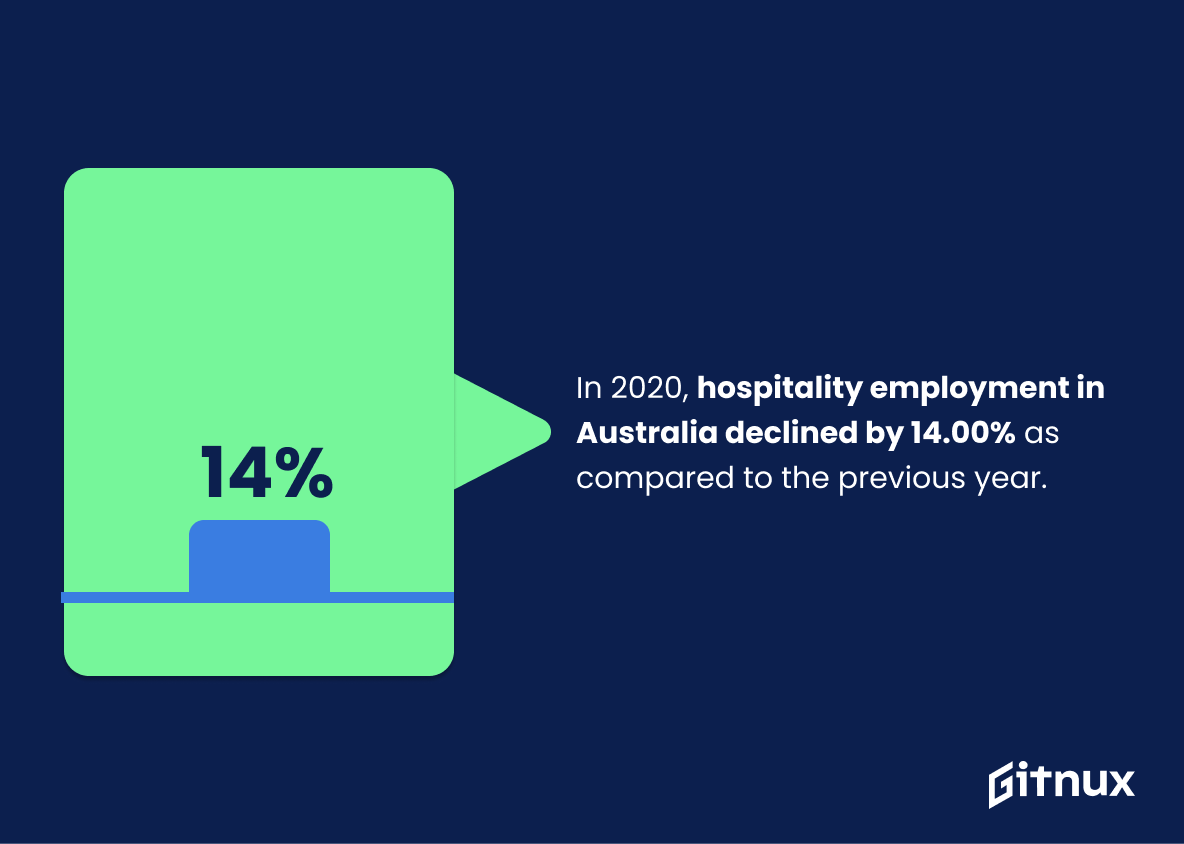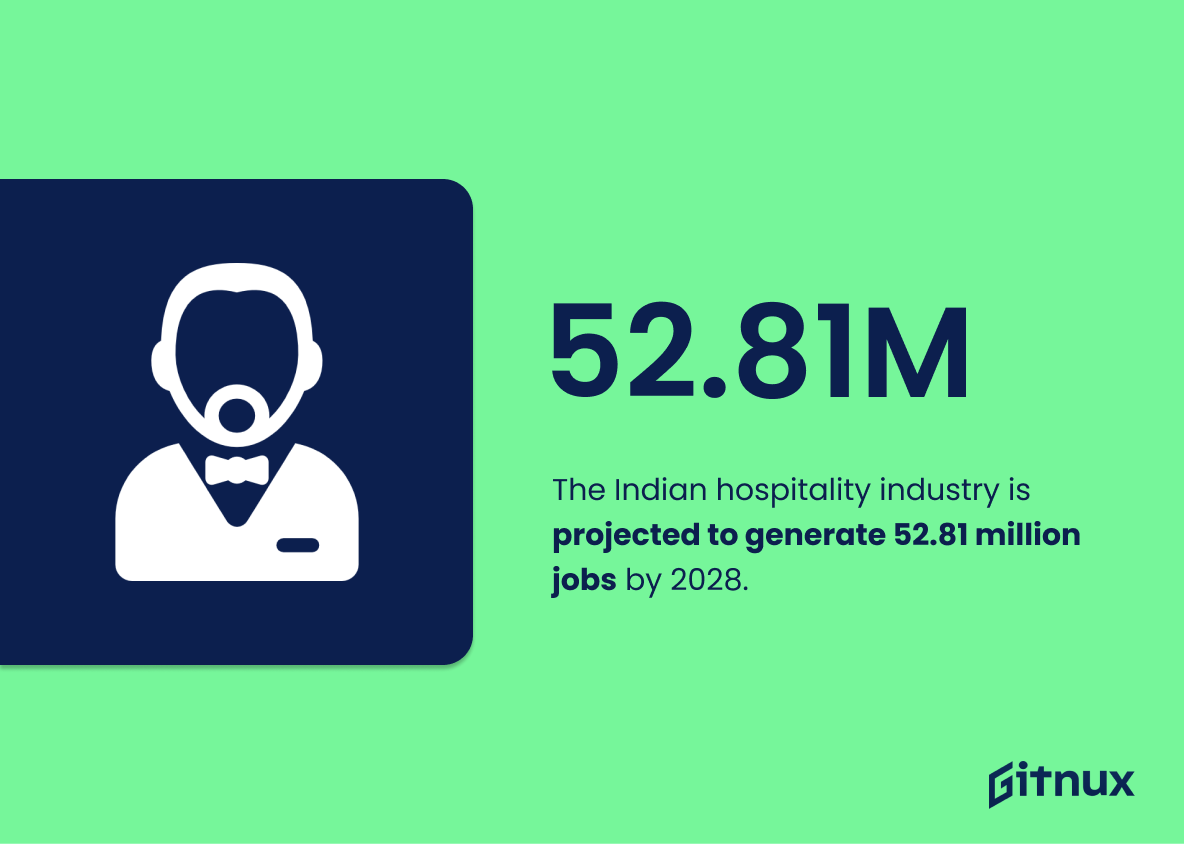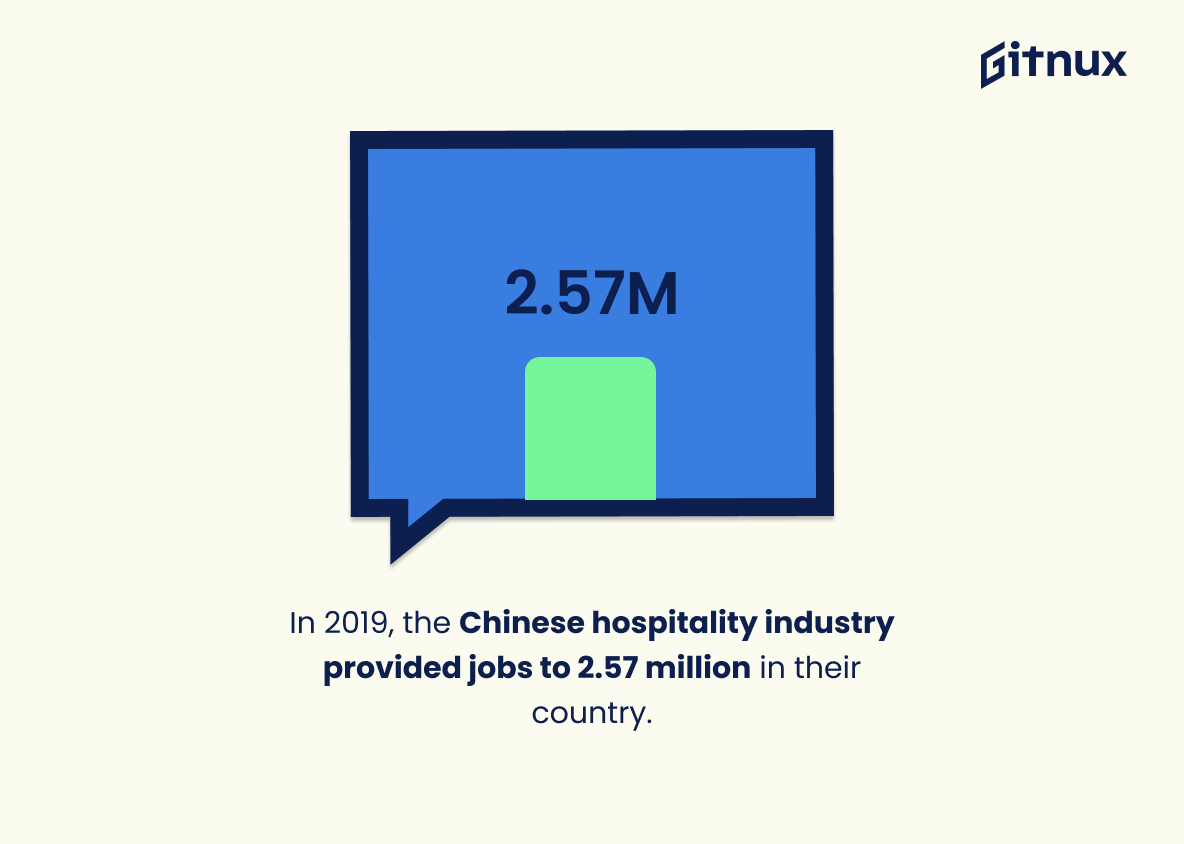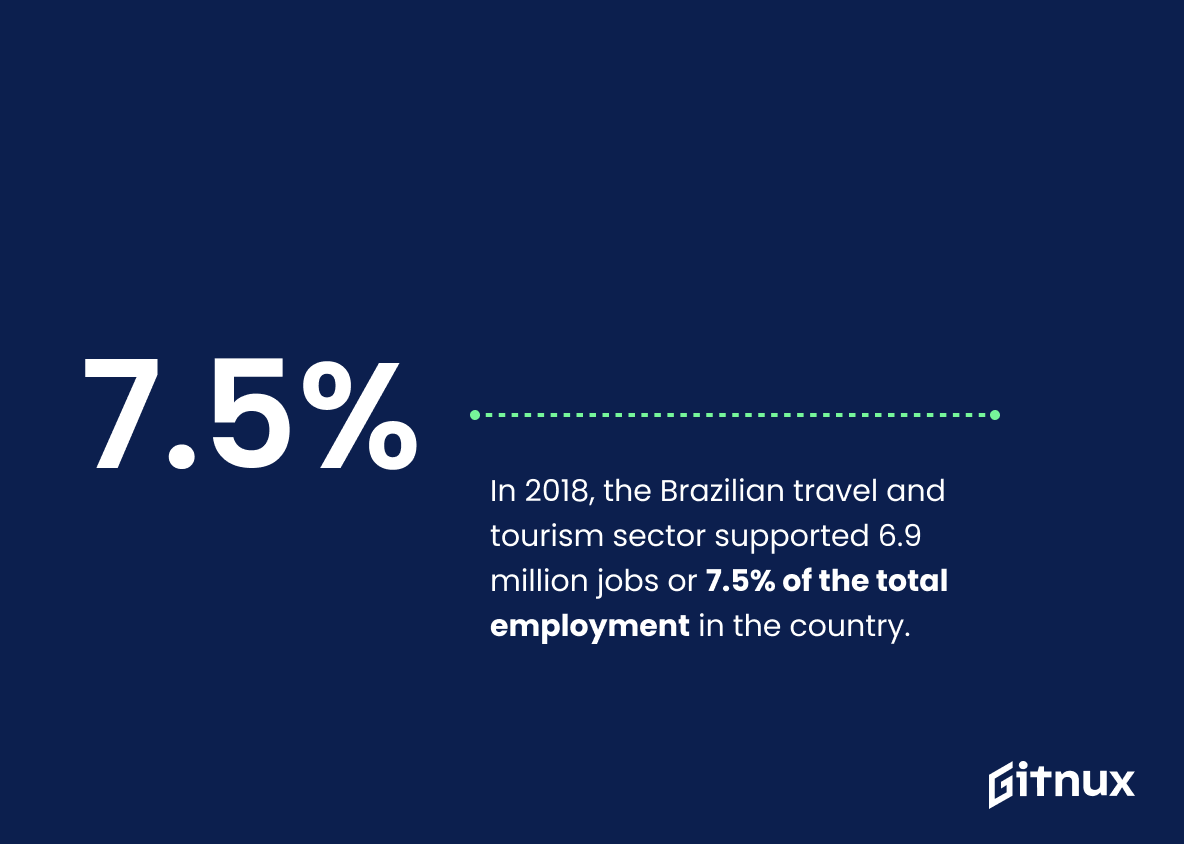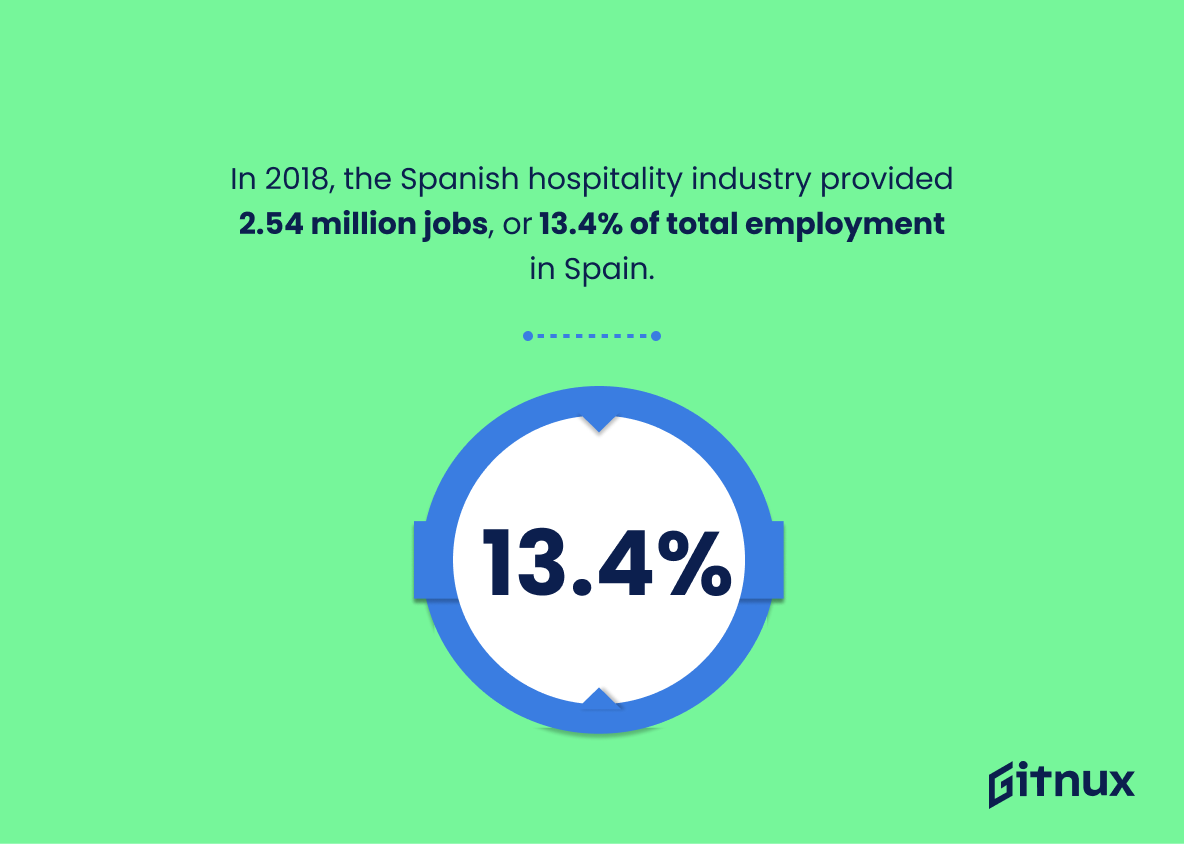The hospitality industry is a major contributor to the global economy, providing employment opportunities for millions of people around the world. This blog post will explore some key statistics about employment in the hospitality and leisure industries across different countries.
We’ll look at figures from 2019 and 2018 that show how many jobs were created by this sector in various nations, as well as its contribution to GDPs and other economic indicators. Additionally, we’ll examine gender disparities within these industries and their impact on overall job creation numbers. Finally, we’ll discuss projections for future growth in this field so you can get an idea of what’s ahead for those looking to enter or stay employed in it.
Employment In Hospitality Industry Statistics Overview
In 2018, the hotel industry in the U.S. provided 1.3 million jobs.
This statistic is a powerful reminder of the importance of the hospitality industry in the U.S. economy. It highlights the fact that the industry is a major employer, providing 1.3 million jobs in 2018 alone. This is a significant contribution to the labor market and demonstrates the potential of the hospitality industry to create jobs and support economic growth.
In 2019, the restaurant and food service industry employed more than 15.6 million people in the USA.
This statistic is a powerful indicator of the importance of the restaurant and food service industry in the US economy. It highlights the sheer number of people employed in the sector, demonstrating the scale of the industry and its impact on the labor market. This is especially pertinent in the context of a blog post about Employment In Hospitality Industry Statistics, as it provides a comprehensive overview of the industry’s size and importance.
In 2019, a total of 334 million jobs were generated by the global travel and tourism sector, accounting for 1 in 10 jobs worldwide.
This statistic is a powerful testament to the importance of the hospitality industry in the global economy. It highlights the sheer number of jobs that the sector is responsible for, demonstrating that it is a major source of employment for people around the world. This is especially pertinent in the context of a blog post about employment in the hospitality industry, as it provides a clear indication of the scale of the industry and its importance to the global economy.
As of 2018, the largest share of jobs in the European hospitality industry belonged to restaurants (46.6%).
This statistic is a telling indication of the importance of restaurants in the European hospitality industry. It highlights the fact that restaurants are the largest employers in the sector, making up almost half of all jobs. This is significant for anyone looking to gain employment in the hospitality industry, as it suggests that restaurants are the most likely source of employment. Furthermore, this statistic can be used to inform decisions about where to focus resources and efforts when it comes to job creation in the hospitality industry.
In 2018, women comprised 54% of the workforce in the UK hospitality sector.
This statistic is a powerful indicator of the importance of women in the UK hospitality sector. It highlights the fact that women are a major part of the workforce in this industry, and that their contributions are essential to its success. This statistic is also important in terms of highlighting the need for gender equality in the workplace, as well as the need for more opportunities for women in the hospitality sector. By highlighting this statistic, it can help to raise awareness of the importance of women in the hospitality industry and the need for more equitable employment opportunities.
The UK’s hospitality industry provided employment to 3.52 million people in 2018.
This statistic is a powerful indicator of the importance of the hospitality industry in the UK. It demonstrates the sheer number of people who rely on the industry for their livelihoods, and the impact it has on the economy. It is a key piece of information for anyone looking to understand the scale of the industry and the importance of employment in the hospitality sector.
In France, the hotel and catering sector provided employment to 1.06 million people in 2018.
This statistic is a powerful indicator of the importance of the hospitality industry in France. It demonstrates that the sector is a major source of employment, providing jobs to over a million people in 2018 alone. This highlights the significance of the hospitality industry in France and its potential to create more jobs in the future.
As of 2020, the German hospitality industry employed around 2.45 million workers.
This statistic is a powerful indicator of the importance of the hospitality industry in Germany. It shows that the industry is a major employer, providing jobs for millions of people. This is especially relevant in the context of a blog post about Employment In Hospitality Industry Statistics, as it provides a clear snapshot of the industry’s current state and its potential for growth.
In 2020, hospitality employment in Australia declined by 14.00% as compared to the previous year.
This statistic is a stark reminder of the impact the pandemic has had on the hospitality industry in Australia. It highlights the need for further support and investment in the sector to ensure its survival and recovery. It also serves as a warning to other industries that may be similarly affected in the future. This statistic is a powerful reminder of the importance of the hospitality industry to the Australian economy and its workers.
In Canada, the hospitality industry employed over 1.8 million people in 2019.
This statistic is a powerful indicator of the importance of the hospitality industry in Canada. It shows that the industry is a major employer, providing jobs to a large number of people. This is significant for anyone interested in the hospitality industry, as it demonstrates the potential for employment opportunities and the potential for growth. It also highlights the importance of the industry to the Canadian economy, as it contributes significantly to the country’s GDP.
The Indian hospitality industry is projected to generate 52.81 million jobs by 2028.
This statistic is a powerful indicator of the potential of the Indian hospitality industry to create jobs and provide employment opportunities. It highlights the immense growth potential of the sector and the potential for it to become a major source of employment in the country. This statistic is an important piece of information for anyone interested in the hospitality industry and its impact on employment. It is a key statistic to consider when discussing the employment opportunities in the hospitality industry.
In 2019, the Chinese hospitality industry provided jobs to 2.57 million in their country.
This statistic is a powerful testament to the importance of the hospitality industry in China. It demonstrates the sheer number of people employed in the sector, highlighting the industry’s significance to the country’s economy. Furthermore, it serves as a reminder of the potential for growth in the hospitality industry, and the potential for job creation in the sector. As such, this statistic is an invaluable resource for anyone looking to gain insight into the employment opportunities in the hospitality industry.
In 2018, the Brazilian travel and tourism sector supported 6.9 million jobs or 7.5% of the total employment in the country.
This statistic is a powerful reminder of the importance of the travel and tourism sector in Brazil. It highlights the fact that the hospitality industry is a major contributor to the country’s employment, providing jobs for 6.9 million people. This is a significant portion of the total employment in Brazil, and it demonstrates the potential of the hospitality industry to create jobs and support the economy.
The Italian catering industry provided 956,524 jobs in 2019.
This statistic is a testament to the importance of the Italian catering industry in providing employment opportunities. It highlights the fact that the hospitality industry is a major source of jobs in Italy, and that it is a vital part of the country’s economy. This statistic is a reminder of the importance of the hospitality industry in providing employment and economic stability to the people of Italy.
In 2018, the Spanish hospitality industry provided 2.54 million jobs, or 13.4% of total employment in Spain.
This statistic is a powerful indicator of the importance of the Spanish hospitality industry in the country’s economy. It demonstrates that the sector is a major source of employment, providing jobs for over 2.5 million people and accounting for more than 13% of total employment in Spain. This highlights the significance of the hospitality industry in the country and the need to ensure that it remains a viable and prosperous sector.
In 2018, nearly 30% of the workforce in the Maldives was employed in the travel and tourism sector.
This statistic is a testament to the importance of the travel and tourism sector in the Maldives. It highlights the fact that a significant portion of the workforce in the Maldives is employed in the hospitality industry, making it a major contributor to the country’s economy. This statistic is especially relevant to a blog post about Employment In Hospitality Industry Statistics, as it provides a concrete example of the impact of the hospitality industry on a particular country.
By 2019, the Indonesian travel and tourism sector supported 13.3 million jobs, accounting for 10.3% of the country’s total employment.
This statistic is a powerful testament to the importance of the hospitality industry in Indonesia. It shows that the sector is a major contributor to the country’s employment, providing jobs for over 13 million people. This highlights the need for continued investment in the hospitality industry, as it is a key driver of economic growth and job creation.
Conclusion
The hospitality industry is a major contributor to the global economy, providing millions of jobs and generating billions in revenue. In 2019 alone, over 16.9 million people were employed in the U.S., while 334 million jobs were generated by travel and tourism worldwide. The hotel industry provided 1.3 million jobs in 2018, with restaurants employing 15.6 million people that same year across America; Europe’s largest share of employment belonged to restaurants (46%), followed closely by hotels at 44%.
Women comprised 54% of UK hospitality sector employees as well as 30% of Maldives’ workforce; Nigeria had 2 million direct and indirect job opportunities due to its hospitality industry while Indonesia supported 13.3million positions accounting for 10% total employment rate there . These figures demonstrate just how important this sector is not only for economic growth but also for creating meaningful work opportunities around the world – making it an essential part of our society today.
References
0. – https://www.globenewswire.com
1. – https://www.wttc.org
2. – https://www.tra.gov.au
3. – https://www.statista.com
4. – https://www.destatis.de
5. – https://www.ceoe.es
6. – https://www.wttc.org
7. – https://www.english.www.gov.cn
8. – https://www.restaurant.org
9. – https://www.ec.europa.eu
10. – https://www.canadianbusiness.com


